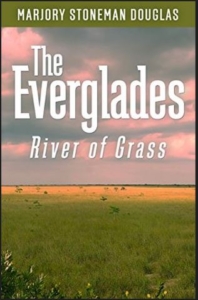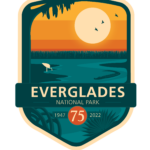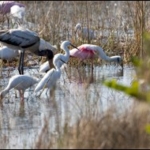Everglades National Park ~ Douglas and Coe’s Vision 75 Years Later by Lois Bolin, Ph.D., Old Naples Historian
 Marjory Stoneman Douglas, author of the enduring publication The Everglades: River of Grass, was known for her humanitarian efforts before she lent her energies to the cause of protecting the swamp at the southern tip of Florida. In honor of the dedication of the Everglades National Park in 1947, Mrs. Douglas wrote a fitting tribute to the man to whom all Floridians owed a great debt of thanks: Ernest Francis Coe, the Forgotten Father of the Everglades.
Marjory Stoneman Douglas, author of the enduring publication The Everglades: River of Grass, was known for her humanitarian efforts before she lent her energies to the cause of protecting the swamp at the southern tip of Florida. In honor of the dedication of the Everglades National Park in 1947, Mrs. Douglas wrote a fitting tribute to the man to whom all Floridians owed a great debt of thanks: Ernest Francis Coe, the Forgotten Father of the Everglades.
Her tribute began with, “He was certainly the prophet, and unmistakably the founder, but what more he was is hard to define. Ernest F. Coe, the 6-foot-tall, spare, courtly gentleman without whose startling vision, slow-burning passion, steely endurance, and indomitable will, there would be no Everglades National Park today. And probably no Everglades. No one word can contain his complexity or equal his simplicity….”
‘A white fire of revelation’
Mr. Coe, a Yale graduate who earned his post education in landscape architecture in Japan and Europe, became one of New England’s best and brightest in landscape design. When he landed in Miami in 1925, he was ready to market himself to the wealthy Palm Beach society, who would need his landscaping talent. This is where he met Harold Bailey, the organizer of a group of Miami intellectuals who were interested in the Everglades.
He wanted to see these Glades firsthand, and upon that first gaze, a “white fire of revelation” took hold. From that moment on, until his death in 1951, he was her unyielding champion in words and deeds. She became his home away from home — a rare and misunderstood treasure he vowed to protect.
 Mr. Coe would roam the Glades alone, with only a walking stick, and was reportedly able to sleep just about anywhere — on the beach, on a riverbank with the alligators nearby or on a bed of leaves in the hammock.
Mr. Coe would roam the Glades alone, with only a walking stick, and was reportedly able to sleep just about anywhere — on the beach, on a riverbank with the alligators nearby or on a bed of leaves in the hammock.
Even the scream of panthers never fazed him. As the story was told to the Saturday Evening Post, one night as he fell asleep a big cat sat next to his shoulder and he “enjoyed the friendliness of the wild thing.
The goal line
On May 30, 1934, an Act was passed authorizing a park of 2,164,480 acres (875,953 hectares) to be acquired through public or private donation. Everglades National Park was to be “… wilderness, (where) no development … or plan for the entertainment of visitors shall be undertaken which will interfere with the preservation intact of the unique flora and fauna of the essential primitive natural conditions now prevailing in this area.” This was one of the strongest mandates in the legislative history of the National Park System.’ 
Mr. Coe talked, petitioned, and pleaded his case about the importance and value of protecting the Everglades for more than two decades, but it wasn’t until after World War II that his passion finally reached those who could make his dream a reality.
Preservation hesitation
 John Pennekamp, the editor of the Miami Herald, who knew both Mrs. Douglas and Mr. Coe as conservation kindred spirits (Mrs. Douglas was also a Herald columnist), revived the Everglades National Park Commission. Mr. Pennekamp learned that 900,000 acres belonged to the state and then convinced the public-spirited Barron Collier family to donate additional lands to comprise the park.
John Pennekamp, the editor of the Miami Herald, who knew both Mrs. Douglas and Mr. Coe as conservation kindred spirits (Mrs. Douglas was also a Herald columnist), revived the Everglades National Park Commission. Mr. Pennekamp learned that 900,000 acres belonged to the state and then convinced the public-spirited Barron Collier family to donate additional lands to comprise the park.
On December 6, 1947, President Harry S. Truman formally dedicated Everglades National Park in a ceremony held at Everglades City. It took five Florida governors, three United States presidents and $2 million dollars, but finally the hesitation was over – Everglades National Park became a reality.
Statues of Ernest Coe and Marjory Stoneman Douglas were housed at the Naples Heritage Trail Museum inside the Naples Trolly Station on 6th Avenue S. They are now patiently awaiting their new home at the Hoff man Welcome Center on 5th Avenue South coming this year and we can hardly wait. Stay tuned!
COURTESY PHOTO / FLORIDA MEMORY STATE LIBRARY & ARCHIVES OF FLORIDA Ernest F. Coe, right, accepts a plaque in recognition of his eff orts at the dedication of Everglades National Park, December 6, 1947.




Leave a Reply
Want to join the discussion?Feel free to contribute!